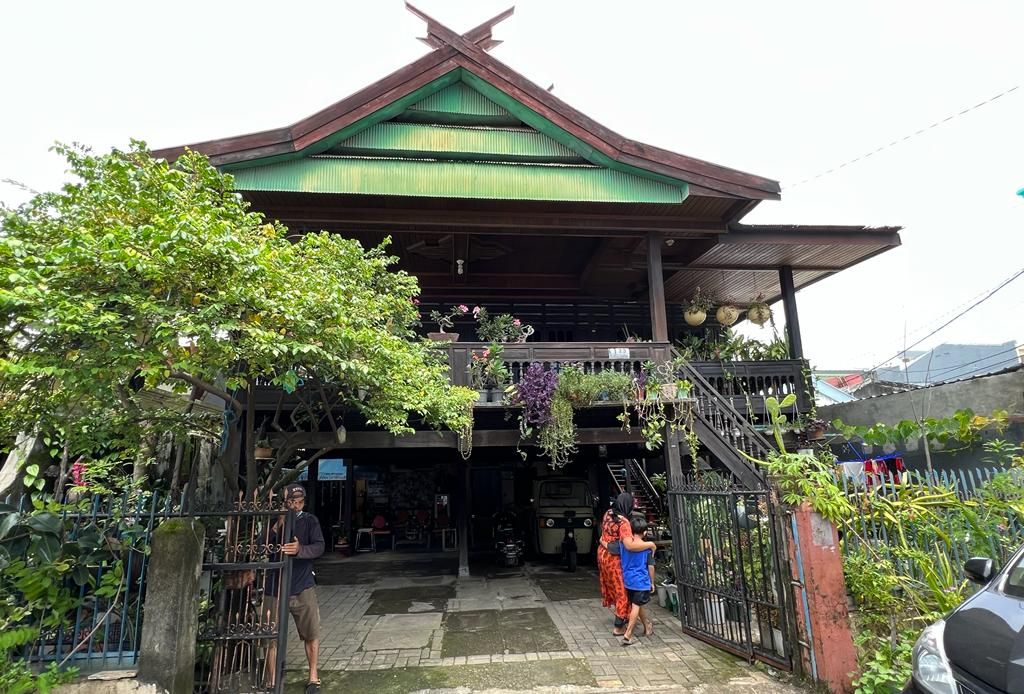The metropolitan hustle and bustle have not been enough to make all Makassar residents dissolve in the will of the times. Among the dominance of concrete buildings, some residents are still loyal to traditional houses on stilts.
Marjuni Amiruddin, 53, was relaxing under his stilted house located in an alley on Jl. Yos Sudarso, Makassar, South Sulawesi, on Monday (21/3/2022) afternoon. A neighbor also sat there while chatting with Marjuni's wife. Enjoying the wind was the reason why the neighbors felt comfortable spending the afternoon at Marjuni's stilt house.
The stilt house is more than 20 years old and was built using ulin wood, which in South Sulawesi is known as sappu wood. The house measuring 10 meters by 20 m is firmly supported by 12 alliri or supporting poles about 2 m high.
“Friends and family, especially those from out of town, love visiting here. They enjoy sitting under or on the terrace above. Neighbors often spend time under the house in the afternoon or evening,” said Marjuni.
Among the rows of modern houses in the alley, Marjuni's stilt house stands out. The wood is black and the home looks cool under the shade with various plants in its small yard.
Marjuni said that in the beginning, they lived in an ordinary house. When they were about to renovate the house, Marjuni's parents chose to replace it with a house on stilts. The reason was to continue the tradition of houses on stilts in the villages where the childhood home of Marjuni's mother was. There was a longing to enjoy a house on stilts after his mother left her hometown in Soppeng regency, about 160 kilometers northeast of Makassar.
Marjuni and his siblings also understood the wishes of their parents. Therefore, their house was demolished and transformed into a wooden house. This house was ordered in Barru regency, about 100 km north of Makassar. Marjuni and his mother chose the model of the house, as well as the wood to be used.

A mother and her child walk into a house on stilts on Jalan Yos Sudarso, Makassar, Monday (21/3/2022). Previously at this location stood a permanent house, but later the owner replaced it with a house on stilts.
In Barru, the house was made by expert craftsmen. When finished, parts of the house were brought to Makassar and installed in its current location. They chose the model of a traditional house or a house on stilts in the Soppeng area, following their mother's hometown. Since its establishment more than 20 years ago, almost nothing has changed in this house. Marjuni was reluctant to replace it. He even enjoyed this house with all his memories.
On Jl. Sultan Alauddin, a crowded and busy lane on the Makassar-Gowa connecting axis, two houses on stilts also stand firmly. Located in a location with fairly spacious land and several large trees in the front yard, this house always steal the attention of people passing by.
One of the houses on stilts has shorter poles, about 1 m, with a roof resembling a traditional house in Central Java. There are many Jepara carvings on the outer or inner walls of the house. However, the shape of the stairs and terraces are still typical of Bugis-Makassar houses.
This house has been inhabited for at least three generations, from the first generation named Andi Time Karaeng Ballajawaya. The naming of Ballajawaya — which means Javanese house — behind Andi Time's name could be because the model of this house adopts some forms of the Javanese house.












